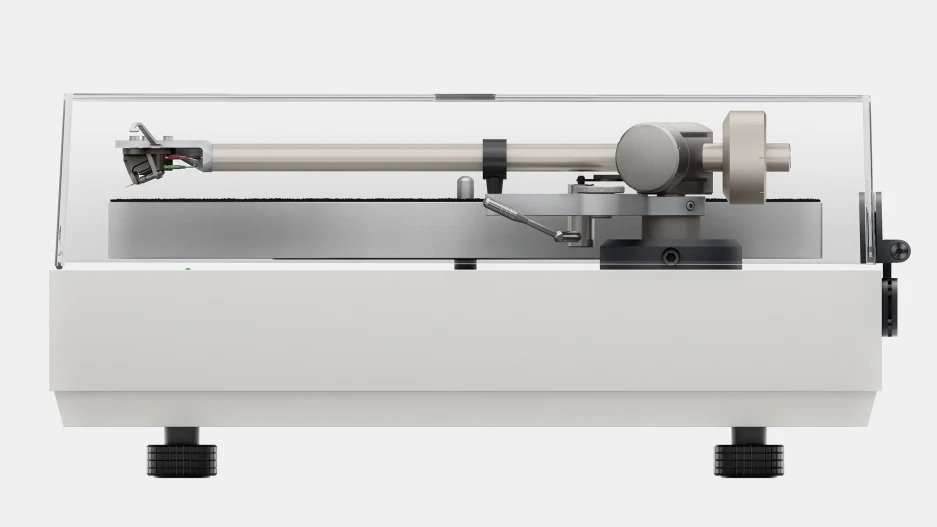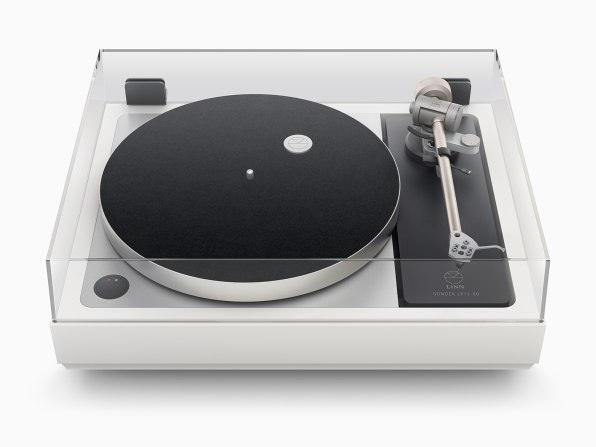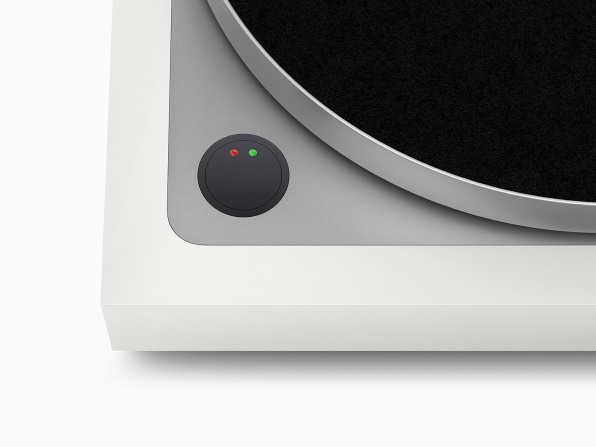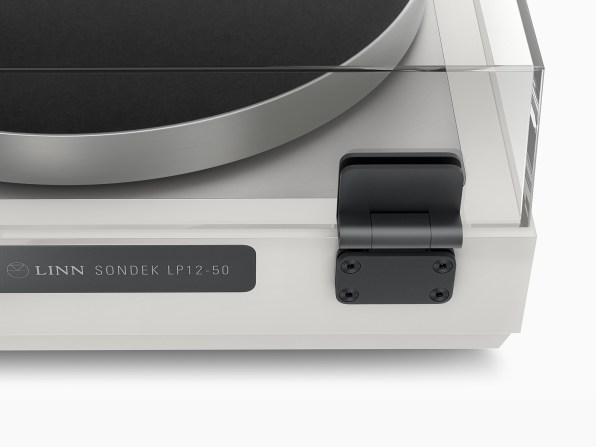- | 8:00 am
Jony Ive discusses his first hardware project post-Apple
LoveFrom designed Linn’s new $60,000 record player pro bono.

Since Jony Ive left Apple to launch LoveFrom in 2019, we’ve seen his firm’s obsessive work on a historic typeface, royal documents and seals, and even one red clown nose. But we’ve yet to watch the firm let loose on what Ive and his cofounder, Marc Newson, are best known for: industrial design.
Today that changes with a record player called the Sondek LP12-50. Designed by LoveFrom alongside the British audio brand Linn, the product is a 50th-anniversary edition of the LP12—what Ive describes to me as “a very gentle and modest project for us that was really motivated by our love and respect for Linn.”
The iPods and Airpods that Ive designed at Apple are icons of mainstream digital music, and Linn’s LP12 is something of an icon in its own rite—albeit analog, high end, and designed for audiophiles. Not only does the turntable promise to capture the subtlest tones of vinyl, it launched in 1973 with a unique business model of modular, mix-and-matchable parts that can be upgraded over time. So for a few hundred dollars, you can swap out the base. And for a few thousand dollars, you can swap out the tone arm. That drove a relatively small but passionate community to commit to Linn, sometimes for life. And to this day, the LP12 holds its own in listening tests (granted, for a price premium).

“You can imagine the enthusiasm,” says Linn CEO Gilad Tiefenbrun, who took over the company from his father, designer of the original LP12. “You got this product, you’re listening to all your records. Then you get an upgrade, and you get to listen to all your records again, and they all sound better.”
The LP12-50 project started in an unassuming way in early 2022, when Tiefenbrun received a DM on LinkedIn from Ive’s assistant, asking to talk.
“I deleted it, thinking it was another spam message,” Tiefenbrun says with a laugh. “A few hours later, I had this nagging feeling—‘Maybe it was Jony Ive’—so I got it out of the trash.” The two hopped on the phone. It turned out that Ive was in the market for a turntable himself, and he’s a longtime fan of the brand who actually visited the Linn factory in his 20s. As the two got to talking, Tiefenbrun mentioned Linn’s upcoming anniversary.
“[Ive] said, ‘Okay, let me have a think on it,” Tiefenbrun recalls. “By the next morning, I had an email from him saying, ‘I’d love to work with you on a special edition.’”
Over nearly a year of development, engineers at Linn and designers at LoveFrom assessed every component of the LP12. By nature, much of the turntable’s architecture could not be changed, lest its careful audio design suffer. When I mention this design “constraint” to Ive—a most certain lover of words—he politely corrects my language.

“I’m not sure constraint is the right word. The ‘boundaries’ you work within that are defined by the audio performance of the product are, of course, and quite rightly nonnegotiable. It would be sacrilegious to disrespect those boundaries—and I think it would be such a pity to,” he says. “What really characterized our approach, and what I think defined our contribution, was just a sense of deference for what is without doubt an icon in this product category. But that being said, we saw a number of areas where there could be small improvements and gentle evolutions of the current design.”
Linn was already in the process of incorporating a new wood technology for its plinth (the case), which pushes layers of timber together under high pressure to create a facade that is acoustically silent. (Whereas an acoustic guitar or other wooden instrument uses its wood for resonance, a turntable wants to mute those vibrations.) LoveFrom spent hours on calls learning the boundaries of the design, and homed in on dozens of details that it could address in the product.
At a quick glance, you still might not distinguish the LP12 from the LP12-50, as its silhouette remains unchanged. But look to the deck, and you’ll see the squared-off components have been swapped out for smooth-curved corners—which echo the roundness of the tone arm and the platter across the surface.
“When it’s such a broadly recognized and respected icon, and elements of the design are familiar, it doesn’t necessarily mean they’re optimal. Particularly when you have products that do assume that status of becoming iconic, and have that sort of cultural resonance, it’s easy to assume that they are beyond improvement,” Ive says. “And this is a particularly challenging design problem to respectfully evaluate the product.”

Notably, the LoveFrom team also redesigned two of the literal touch points of the LP12. A new power button trades a plastic rocker for a charcoal aluminum circle, and the team developed a custom hinge, which allows the dust cover to float at any angle without resistance. Both of these components are machined in-house by Linn.
What may be most surprising of all about the project is that—while the LP12-50 goes on sale in a limited run of 250 units for $60,000 (a price set by Linn)—LoveFrom completed the work pro bono, and has no contract or other financial arrangement with the company.
As Ive explains, retaining the flexibility to take on projects for the sake of the craft alone is largely the point of LoveFrom. While the studio has long-running relationships with companies like Airbnb and Ferrari that represent its paid business, its team dedicates some of its efforts to shorter-term collaborations without expectation of ROI.

“There are many things that I’ve always wanted to be able to do purely for the love of doing them,” Ive says. “And there’s a substantial percentage of our work which we do purely for the love of doing it.”
As such, the LP12-50 is both a portrait of LoveFrom’s passion and also something of an amuse-bouche for the much longer-term product work for companies like Ferrari that we have yet to see.
“I’ve owned multiple Linn products over the years, and music has always been profoundly important to me,” Ive says. “So you can imagine, I think the first consequential music player that I designed was the first iPod, and that began a journey of multiple generations of iPod, and multiple Airpods and music accessories. I feel really fortunate to have gone the full circle . . . so many years on from my first visit to the factory.”





































